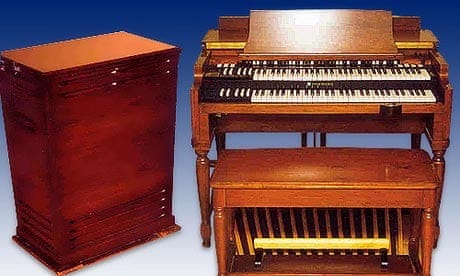The History of the Organ Bubble in Reggae
How the organ shuffle rhythm became a defining element of reggae music
The History of the Organ Bubble in Reggae: Origins of the Shuffle Groove
The organ bubble, also known as the shuffle or bubble rhythm, is one of the most iconic sounds in reggae music. It's that syncopated, off-beat organ pattern that creates a steady pulse between the drums and bass—simple, but essential. This short article traces its roots, early use, and lasting impact on Jamaican music.
Origins: Late 1960s – Birth of the Bubble
The organ bubble emerged during the transition from rocksteady to early reggae in the late 1960s, as the tempo of Jamaican popular music increased and arrangements became more rhythm-focused.
Instrument: Typically played on a Hammond organ (like the B3 or M3), Vox Continental, or Farfisa, the bubble sits in the midrange, locking in with the hi-hats and rhythm guitar skanks.
Rhythmic Role: The bubble plays a steady eighth-note pulse with a distinct emphasis on the "and" between beats—syncopated and shuffling, it feels like it's dancing inside the groove.
Who Started It?
While hard to attribute to a single player, Jackie Mittoo is widely credited with pioneering the bubble rhythm.
As the keyboardist and arranger at Studio One, Mittoo’s influence was massive.
His work with the Soul Vendors and The Skatalites helped shape the sound of Jamaican music across ska, rocksteady, and reggae.
Songs like "Hot Milk" and "Darker Shade of Black" showcase his early bubble-style rhythms.
Early Songs Featuring the Organ Bubble
Here are some key early tracks that introduced and refined the bubble rhythm:
"Nanny Goat" – Larry & Alvin (1968)
Often cited as one of the first true reggae songs, this track features a simple organ shuffle underneath the groove."Hot Milk" – Jackie Mittoo (1968)
A Studio One instrumental classic with that signature bubbling groove."Love Me Forever" – Carlton & The Shoes (1968)
Organ shuffle is subtly present, providing that flowing midrange texture."Throw Me Corn" – Larry Marshall (1968)
More Studio One heat with an infectious shuffle and grooving organ line.
Why the Bubble Matters
The organ bubble serves as the glue in reggae rhythm sections, binding the one-drop drum pattern and heavy basslinestogether. It gives the music a heartbeat and feel that’s uniquely reggae.
Even today, reggae keyboardists learn the bubble as a foundational technique—it’s essential for ska, roots, dub, dancehall, and beyond.
Why the Hammond B3 Became the Go-To for the Organ Bubble in Reggae
The Hammond B3 organ wasn’t just an instrument—it was a revolution in sound. In reggae, it became the foundation for the organ bubble (or shuffle) because of its tone, presence, and feel. Here's why it stood out and how it gained that status.
A sample of it’s tone & sound
Why the Hammond B3 Became the Bubble King
Warm, Round Tone:
The B3’s tonewheels generate a rich, warm sound that sat perfectly between the bass and drums, helping to lock in the groove without dominating the mix.Percussion and Drawbars:
Players could customize their tone with drawbars and add percussive clicks, giving the bubble rhythm more texture and punch.Leslie Speaker Swirl:
Paired with a Leslie rotary speaker, the B3’s sound could move and breathe, adding a subtle swirling motion to each chord—making even simple chords feel alive.Dynamic Playability:
The weighted keys and responsive feel allowed players like Jackie Mittoo to articulate rhythms precisely, shaping the shuffle to bounce with the groove.Durability in Studio Sessions:
In the Jamaican studio scene of the late '60s and '70s, having gear that could survive long, hot sessions and still sound full and consistent made the B3 a winner.
A Brief History of the Hammond B3
Invented: 1935 by Laurens Hammond, with the B3 introduced in 1954.
Technology: Uses tonewheels instead of traditional pipes or reeds, giving it an electric-mechanical uniqueness.
Popular Pairing: Almost always used with a Leslie cabinet, which creates the classic swirling vibrato effect by spinning its speakers.
Where Else Did the B3 Dominate?
Gospel:
The B3 is almost sacred in Black American churches. It brought power, emotion, and fire to sermons and songs alike.Jazz:
Artists like Jimmy Smith, Brother Jack McDuff, and Lonnie Smith pioneered the organ trio format—drums, guitar, and Hammond—creating funky, soulful jazz.Blues & Soul:
Used in Booker T. & the M.G.'s, Aretha Franklin, and countless Stax Records hits. The B3 added grit and groove.Rock:
Featured heavily in 60s and 70s rock: The Doors, Deep Purple, Santana, and Steve Winwood used it to add raw energy and psychedelic depth.Funk:
Artists like Billy Preston and bands like Parliament-Funkadelic used the B3 for funk solos, vamps, and greasy grooves.
Final Word
The organ bubble is more than a rhythm—it's a symbol of Jamaica’s musical innovation, born from necessity and creativity in the studios of Kingston. Thanks to pioneers like Jackie Mittoo and the early Studio One crew, the bubble remains a timeless pulse in global music.





